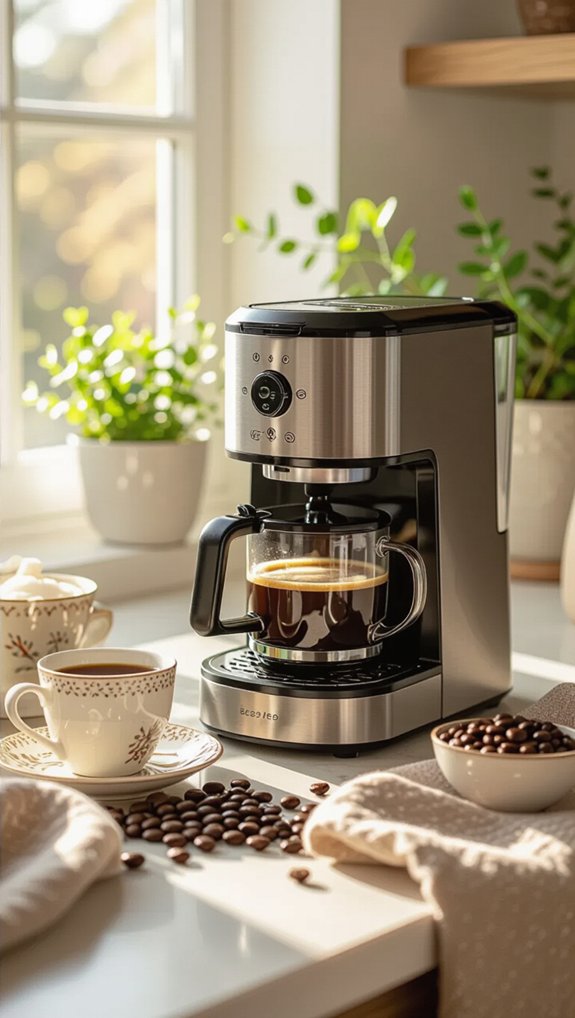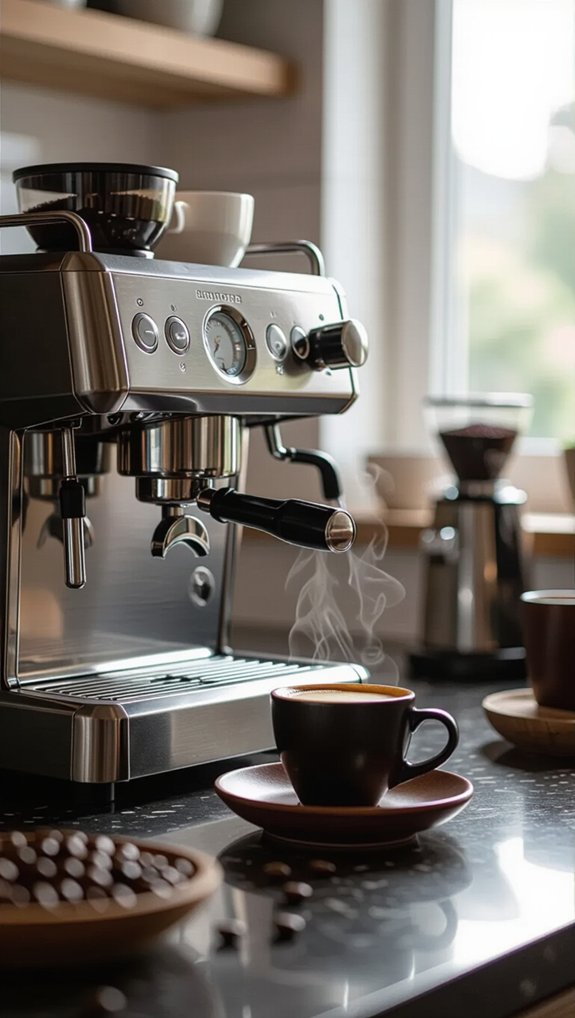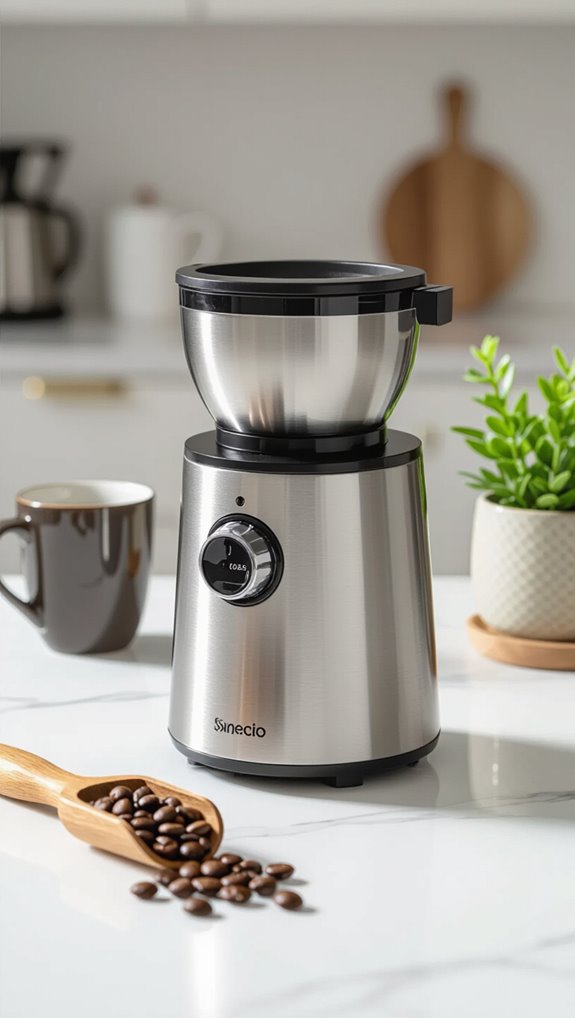According to a 2023 study published in the European Journal of Clinical Nutrition, approximately 40% of regular coffee drinkers report experiencing gastrointestinal discomfort, including nausea, after consuming their morning brew. The National Coffee Association‘s research reveals that despite 7 out of 10 Americans drinking coffee weekly, many struggle with the uncomfortable side effects that come with their caffeine fix.
So why does your beloved coffee suddenly feel like it’s staging a revolt in your stomach? The answer lies in coffee’s complex chemistry—from its naturally high acidity to its caffeine content and unique compounds that can trigger excessive stomach acid production and gut irritation.
In this post, you’ll discover the science-backed reasons behind coffee-induced nausea and learn practical, easy-to-implement tweaks that will help you enjoy your daily cup without the queasy aftermath. Whether it’s adjusting your brewing method, timing your consumption differently, or making simple dietary changes, you’ll find solutions that work for your body.
Table of Contents
Why does coffee make me nauseous

If you’ve ever wondered why coffee sometimes leaves you feeling queasy, you’re not alone.
Coffee can trigger nausea through multiple physiological mechanisms. Its acidic nature and caffeine content stimulate stomach acid production, irritating your digestive system.
When consumed on an empty stomach, coffee delivers a concentrated “caffeine shock” that overwhelms your body’s normal processing capabilities.
Caffeine sensitivity plays a significant role, causing increased heart rate, jitteriness, and gastrointestinal distress.
Factors like stress, dehydration, and rapid consumption can amplify these uncomfortable symptoms, turning your morning brew into a potential trigger for feeling sick.
Different coffee preparation methods can also influence your body’s reaction, with brewing technique potentially impacting the likelihood of experiencing nausea.
Common causes of coffee-related nausea today

Comprehending why coffee triggers nausea requires examining multiple interconnected factors that can upset your digestive system. Your body’s unique response involves complex interactions between caffeine, stomach acids, and individual sensitivities. Chlorogenic acid compounds in coffee can specifically trigger stomach irritation and contribute to nauseous reactions.
Common nausea culprits include:
- Rapid caffeine metabolism disrupting digestive processes
- Acidic coffee compounds irritating the stomach lining
- Genetic variations in enzyme processing affecting caffeine sensitivity
Your specific reaction depends on multiple variables like coffee quality, brewing method, and personal physiological characteristics. Grasping these nuanced interactions can help you modify your coffee consumption to minimize uncomfortable digestive responses and enjoy your daily brew without unwanted side effects.
Is it caffeine or empty stomach

Whether you’re a morning coffee devotee or a midday caffeine enthusiast, you’ve likely wondered why that beloved brew sometimes turns against you, causing unexpected nausea—and the culprit might be more complex than you think.
It’s not just caffeine, but how and when you consume it. Your empty stomach dramatically amplifies coffee’s acidic and stimulating effects. Without food as a buffer, caffeine enters your bloodstream faster, increasing stomach acid production and triggering digestive distress. Individual sensitivity plays a massive role—some people experience more intense reactions than others.
Chlorogenic acids can break down during roasting and storage, potentially contributing to coffee’s ability to cause digestive discomfort.
The solution? Eat before drinking coffee.
Could milk or sweeteners be culprits

Your coffee-induced nausea might be hiding in plain sight—right in your mug’s additives. Those innocent-looking extras could be sabotaging your morning brew. Consider these potential culprits:
- Dairy’s dark side: Lactose can trigger digestive mayhem for 65% of adults
- Sweetener sneakiness: Artificial additives may upset your delicate stomach
- Fat’s revenge: Milk’s creamy texture might relax your esophageal sphincter
Decaf or regular, the acids in coffee combined with milk and sugar can spark a gastro rebellion. Low-fat milk or plant-based alternatives might be your digestive rescue squad.
Acid reflux and sensitive stomachs explained

When your morning coffee turns into a stomach-churning ordeal, acid reflux and sensitive stomachs might be the hidden culprits behind your queasiness.
The relaxed lower esophageal sphincter from caffeine allows stomach acid to escape, triggering heartburn and discomfort. Chlorogenic acids and coffee’s moderate acidity (pH 4.85-5.13) further irritate sensitive digestive tissues, causing nausea and reflux symptoms.
Light roasts and consuming coffee on an empty stomach amplify these issues. If you’re experiencing persistent stomach upset, consider switching to darker roasts, using a filter, or eating before your caffeine fix to minimize digestive distress.
Dehydration, timing, and drinking too fast

Beyond stomach acid’s immediate impact, coffee’s effects on nausea extend to hydration, consumption timing, and drinking pace. When you gulp down coffee rapidly or on an empty stomach, you’re inviting trouble:
- Sudden acid spikes that overwhelm your digestive system
- Increased gastrointestinal contractions causing discomfort
- Potential dehydration from caffeine’s diuretic properties
Moderate coffee intake isn’t the enemy, but how you drink matters. Sip slowly, pair with food, and balance your caffeine with water.
This approach helps prevent nausea by giving your stomach time to adjust, reducing acid shock, and maintaining proper hydration. Your gut will thank you for the gentler coffee experience.
How to reduce coffee nausea fast

Knock out coffee-induced nausea by grasping and implementing targeted strategies that address its root causes. Your morning brew doesn’t have to be a stomach-churning experience.
| Strategy | Action | Benefit |
|---|---|---|
| Hydrate | Drink water | Counteract diuretic effects |
| Eat First | Small meal | Buffer stomach acid |
| Reduce Acid | Cold brew | Less stomach irritation |
| Lower Caffeine | Decaf blend | Minimize sensitivity |
| Manage Stress | Deep breathing | Reduce cortisol levels |
Identify your personal caffeine threshold by tracking consumption. Experiment with low-acid coffee, plant-based milks, and mindful eating to transform your coffee experience from nauseating to enjoyable.
Gentler brew methods and roast choices

If reducing coffee-induced nausea is your goal, selecting the right brewing method and roast can make all the difference in your morning cup. Consider these gentler approaches:
- Cold brew’s 70% lower acidity soothes sensitive stomachs
- Medium roasts balance flavor and digestive comfort
- Arabica beans offer a milder, less irritating experience
Dark roasts break down harsh acids during roasting, while pour-over methods allow precise extraction control. By choosing Arabica beans and cold brewing techniques, you’ll minimize stomach discomfort without sacrificing your caffeine fix.
The key is finding a brewing style that works for your unique digestive system.
When to switch to low-caf options

When coffee starts making you feel queasy or uncomfortable, it’s time to consider switching to low-caffeine alternatives that’ll be gentler on your system.
If you’re experiencing persistent nausea, digestive distress, or anxiety after drinking coffee, it might signal caffeine sensitivity. Pregnancy, breastfeeding, or existing gastrointestinal conditions like GERD can also warrant a switch.
Great low-caffeine options include chicory root coffee, green tea, ginger tea, and rooibos. These alternatives provide similar comfort without the harsh side effects, helping you enjoy a warm beverage while supporting your digestive health and overall well-being.
When to see a doctor about it

Despite your love for coffee, there are definitive medical red flags that signal you shouldn’t just brush off persistent nausea as a minor inconvenience. Some symptoms demand immediate medical attention:
- Blood in vomit or coffee-ground-like appearance
- Chest pain accompanied by severe stomach discomfort
- Inability to keep fluids down for over 12 hours
If you’re experiencing recurring nausea after coffee, especially with warning signs like unexplained weight loss, frequent vomiting, or signs of dehydration, it’s crucial to consult a healthcare professional. Don’t ignore these potential indicators of underlying health conditions that could require professional evaluation and treatment.
Frequently Asked Questions
Can Drinking Water Help Reduce Coffee-Induced Nausea?
Yes, drinking water can help reduce coffee-induced nausea. I’ve found that sipping water before, during, and after coffee helps balance hydration, dilute stomach acid, and prevent the dehydration that often triggers queasiness.
Are There Specific Coffee Brands Less Likely to Cause Stomach Issues?
I recommend Purity Coffee Ease, Pangea, and General Warfield’s Organic Low-Acid Coffee. These brands are specifically crafted to be gentler on sensitive stomachs, with lower acidity levels and careful roasting techniques that minimize digestive discomfort.
Does the Temperature of Coffee Affect Nausea Symptoms?
Yes, coffee temperature significantly impacts nausea. Cold brews can increase stomach irritation, while slower-sipped hot coffee might reduce symptoms. I’ve found that moderating temperature and drinking gradually helps minimize digestive discomfort for sensitive stomachs.
How Long After Drinking Coffee Do Nausea Symptoms Typically Occur?
I typically experience nausea within 30 minutes to an hour after drinking coffee, especially when it’s on an empty stomach. Caffeine’s peak absorption and stomach acid stimulation contribute to these quick-onset symptoms.
Can Probiotics Help Minimize Coffee-Related Stomach Discomfort?
Yes, probiotics can help minimize coffee-related stomach discomfort. I’ve found that specific strains support gut barrier function and reduce inflammation, potentially alleviating nausea and digestive issues triggered by coffee consumption.
In Conclusion
Coffee’s acidity, caffeine, and compounds can trigger nausea, but understanding why coffee makes you nauseous is the first step toward enjoying your daily cup again. The good news? Simple tweaks like switching to low-acid roasts, trying cold brew, eating before you drink, and staying hydrated can make all the difference. Listen to your body and experiment with these adjustments to find what works best for you.
If you’re looking to reduce nausea triggers even further, the right coffee machine can help. Certain brewing methods produce smoother, less acidic coffee that’s gentler on your stomach. Check out our coffee machine reviews to explore well-reviewed options that deliver a better brew for sensitive stomachs.
Remember, if symptoms persist or worsen with vomiting, weight loss, or dehydration, consult a healthcare professional. Your perfect coffee experience is just a few adjustments away.








